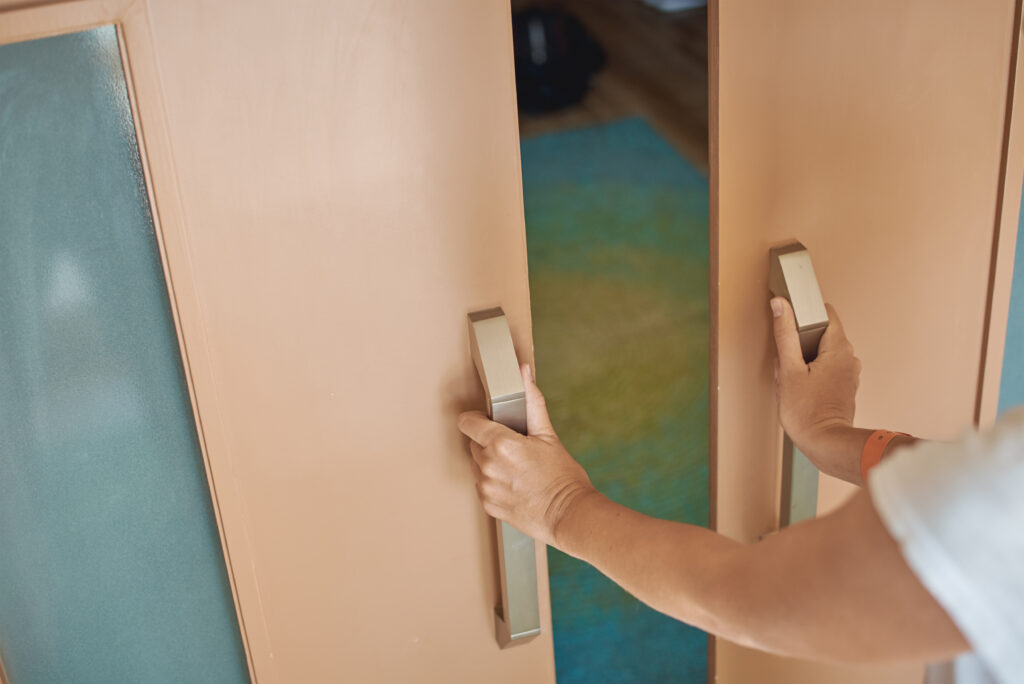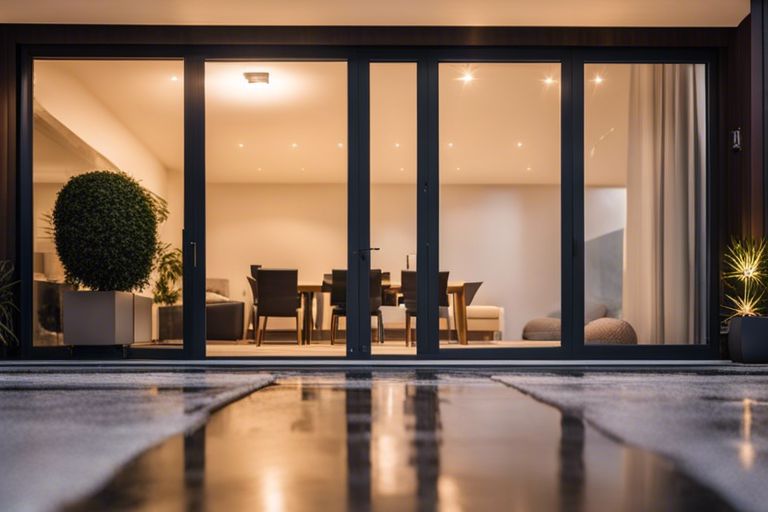When it comes to bringing natural light into your home, rooflights are a popular choice. However, choosing between flat rooflights and traditional skylights can be a crucial decision that impacts both the aesthetics and functionality of your space. Flat rooflights offer a sleek, modern look, maximising the amount of natural light that enters a room. On the other hand, traditional skylights provide a more classic design and can add character to a property. Understanding the differences between the two options is essential to make an informed decision that suits your needs and preferences. In this blog post, we will explore the key factors to consider when comparing flat rooflights and traditional skylights to help you make the best choice for your home.
Key Takeaways:
- Energy efficiency: Flat rooflights are more energy-efficient than traditional skylights due to their design and insulation properties.
- Aesthetic appeal: Flat rooflights offer a modern and sleek look, blending seamlessly with the roofline, while traditional skylights may be more prominent and stand out.
- Natural light: Both flat rooflights and traditional skylights provide ample natural light into the interior space, enhancing the overall ambiance and reducing the need for artificial lighting during the day.

Characteristics of Flat Rooflights
Design Features
Flat rooflights are known for their sleek and minimalistic design, blending seamlessly with modern architecture. They offer a contemporary aesthetic appeal, creating a sense of space and enhancing natural light distribution within a room. The frameless options available in the market provide an unobstructed view of the sky, bringing the outdoors in.
Another key design feature of flat rooflights is their versatility in terms of customisation. They can be tailored to fit specific size requirements, offering flexibility to builders and architects. Additionally, the slim profiles of flat rooflights require minimal framework, maximising the glazed area for optimal daylight penetration.
Installation Considerations
Installing flat rooflights requires careful planning and expertise to ensure a seamless integration with the roof structure. It is essential to consider factors such as weatherproofing, insulation, and drainage to prevent any issues such as leaks or condensation. Proper installation is crucial to maintain the structural integrity of the roof and the longevity of the rooflight.
Furthermore, flat rooflights may require additional support or structural alterations depending on the roof configuration and load-bearing capacity. Consulting with a professional installer is recommended to determine the most suitable installation method for your specific requirements.
It is important to note that improper installation of flat rooflights can lead to water ingress, thermal inefficiency, and potential safety hazards. Therefore, seeking guidance from experienced professionals is essential to ensure a successful and durable installation.
Maintenance Aspects
Flat rooflights are relatively low maintenance compared to traditional skylights, thanks to their design simplicity and durable materials. Regular cleaning of the glazing and frame is essential to prevent dirt build-up and maintain optimal light transmission. Periodic inspections of seals and gaskets will help identify any potential issues before they escalate.
In addition, flat rooflights with self-cleaning coatings or integrated ventilation systems can help reduce the frequency of maintenance tasks. Investing in high-quality materials and professional installation can prolong the lifespan of flat rooflights and minimise the need for frequent upkeep.

Characteristics of Traditional Skylights
Design Variations
Traditional skylights come in various designs to suit different architectural styles and preferences. Some common design variations include fixed skylights, vented skylights, dome skylights, and pyramid skylights. Fixed skylights are stationary and allow natural light to enter without any ventilation capability. Vented skylights, on the other hand, can be opened to allow for better airflow and can help with cooling and air circulation in a building. Dome skylights have a rounded shape that can provide a unique aesthetic appeal, while pyramid skylights offer a modern and architectural look to a roof.
When choosing a traditional skylight design, it is essential to consider factors such as the building’s orientation, roof pitch, and desired effect on the interior space. Each design variation has its advantages and can enhance the overall aesthetic and functionality of a property.
Installation Challenges
Installing traditional skylights can present some challenges, especially when retrofitting them into existing roofs. Common issues include ensuring proper waterproofing to prevent leaks, managing structural modifications to accommodate the skylight, and ensuring adequate insulation around the opening to prevent heat loss or gain. Additionally, the positioning of the skylight is crucial to maximise natural light while minimising potential glare or overheating.
Proper installation of traditional skylights requires expertise and attention to detail to avoid any potential problems in the future. It is essential to consult with professionals who have experience in skylight installation to ensure the process is carried out efficiently and effectively.
When considering the installation of traditional skylights, it is important to factor in the potential challenges to avoid any issues down the line. Choosing the right size, design, and placement of the skylight can contribute to a successful installation that adds value and functionality to the property.
Maintenance and Durability
Traditional skylights typically require regular maintenance to ensure they function correctly and remain in good condition. This includes cleaning the glass or acrylic surfaces to prevent dirt and debris build-up, inspecting the seals for any signs of wear or damage, and checking for condensation or leaks. Proper maintenance can help prolong the lifespan of traditional skylights and prevent issues such as water infiltration or heat loss.
When it comes to durability, traditional skylights are often constructed from materials such as glass, acrylic, or polycarbonate, which are robust and long-lasting. However, exposure to harsh weather conditions or lack of proper maintenance can impact their longevity. Regular inspections and timely repairs can help ensure the durability of traditional skylights over time.
It is important to acknowledge that regular maintenance is key to keeping traditional skylights in optimal condition. Taking care of small issues promptly can prevent more significant problems in the future and extend the lifespan of the skylight. By investing time and effort in maintenance, property owners can enjoy the benefits of natural light and architectural beauty that traditional skylights bring.
Performance Analysis
Energy Efficiency Comparison
When comparing flat rooflights and traditional skylights for energy efficiency, it is essential to consider factors such as insulation, heat loss, and solar heat gain. Flat rooflights typically offer better thermal performance as they are designed with double or triple glazing and thermally broken frames. This helps in reducing heat loss during colder months and minimising solar heat gain in the summer, resulting in lower energy consumption for heating and cooling.
| Factors | Flat Rooflights |
| Insulation | Double or triple glazing |
| Heat Loss | Minimised with thermally broken frames |
| Solar Heat Gain | Reduced in summer |
On the other hand, traditional skylights may have single glazing and less effective insulation, leading to higher heat loss and potential overheating in the summer. It is important to choose the option that promotes energy efficiency and helps in maintaining a comfortable indoor environment throughout the year.
Lighting Quality and Distribution
When evaluating lighting quality and distribution between flat rooflights and traditional skylights, it is crucial to consider factors such as natural daylight diffusion, colour rendering, and glare control. Flat rooflights are designed to provide uniform illumination, reducing shadows and enhancing the overall brightness of a room. The diffusion of natural light through flat rooflights can create a more pleasant and inviting indoor environment.
| Factors | Traditional Skylights |
| Natural Daylight Diffusion | May cause uneven lighting |
| Colour Rendering | Varies based on glazing quality |
| Glare Control | May lead to glare issues |
For optimal lighting quality and distribution, flat rooflights are often preferred as they offer a more consistent and balanced light source inside a building. This not only enhances the visual appeal of the space but also contributes to a healthier and more productive indoor environment.

Aesthetic and Architectural Impact
Influence on Building Design
Flat rooflights and traditional skylights can both have a significant influence on the design of a building. Flat rooflights are sleek and modern, creating a minimalist aesthetic that is popular in contemporary architecture. They allow for uninterrupted views of the sky, bringing in an abundance of natural light and creating a sense of spaciousness. On the other hand, traditional skylights with their pitched roofs can add a touch of classic elegance to a building, especially in traditional or period properties.
Architects and designers often consider the rooflight options early in the design process to ensure they complement the overall architectural vision of the building. The choice between flat rooflights and traditional skylights can greatly impact the building’s silhouette, facade, and interior lighting scheme. Careful consideration is essential to achieve a harmonious and coherent design.
Integration into Styles and Periods
When it comes to integrating rooflights into different architectural styles and periods, both flat rooflights and traditional skylights can be adapted to suit various design aesthetics. Flat rooflights are versatile and can complement modern, minimalistic, or industrial designs. Conversely, traditional skylights are more suited to traditional or heritage buildings, where they can enhance the character and charm of the property.
The key lies in balancing the functionality of the rooflight with the architectural style of the building. Integrating rooflights seamlessly into different styles and periods requires a nuanced approach that respects the building’s heritage while embracing contemporary design elements. The result is a harmonious blend of old and new, creating a unique architectural statement.
Conclusion: Flat Rooflights vs Traditional Skylights
When comparing flat rooflights and traditional skylights, it is evident that both have their unique advantages and considerations. Flat rooflights provide a sleek and modern design that enhances natural light without obstructing views or altering the roofline. On the other hand, traditional skylights offer a classic aesthetic and can provide better ventilation options. The decision between the two ultimately depends on the specific needs and preferences of the homeowner or designer. It is crucial to consider factors such as aesthetics, functionality, energy efficiency, and installation requirements when choosing between flat rooflights and traditional skylights. Ultimately, both options can significantly improve the overall quality of natural light within a space while adding a touch of style and sophistication.
FAQ
Q: What are the main differences between Flat Rooflights and Traditional Skylights?
A: Flat rooflights are sleek, modern, and sit flush with the roof, offering a seamless look and allowing more natural light to enter the space. Traditional skylights, on the other hand, are raised and have a frame that protrudes above the roofline, giving a more classic appearance.
Q: Which one is more energy-efficient, Flat Rooflights or Traditional Skylights?
A: Flat rooflights are typically more energy-efficient than traditional skylights as they offer better thermal performance due to their design and materials. They provide better insulation, reducing heat loss and helping to maintain a comfortable indoor temperature.
Q: Are there any differences in installation costs between Flat Rooflights and Traditional Skylights?
A: Yes, there can be differences in installation costs between flat rooflights and traditional skylights. Flat rooflights may require a more straightforward installation process as they are designed to sit flush with the roof, whereas traditional skylights may involve more complex structural work to accommodate their raised design.






